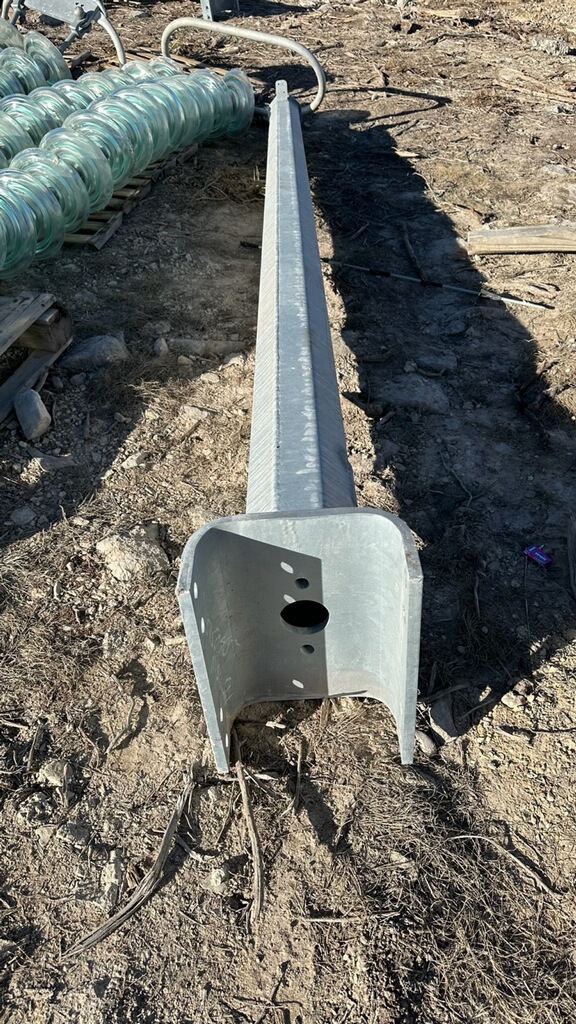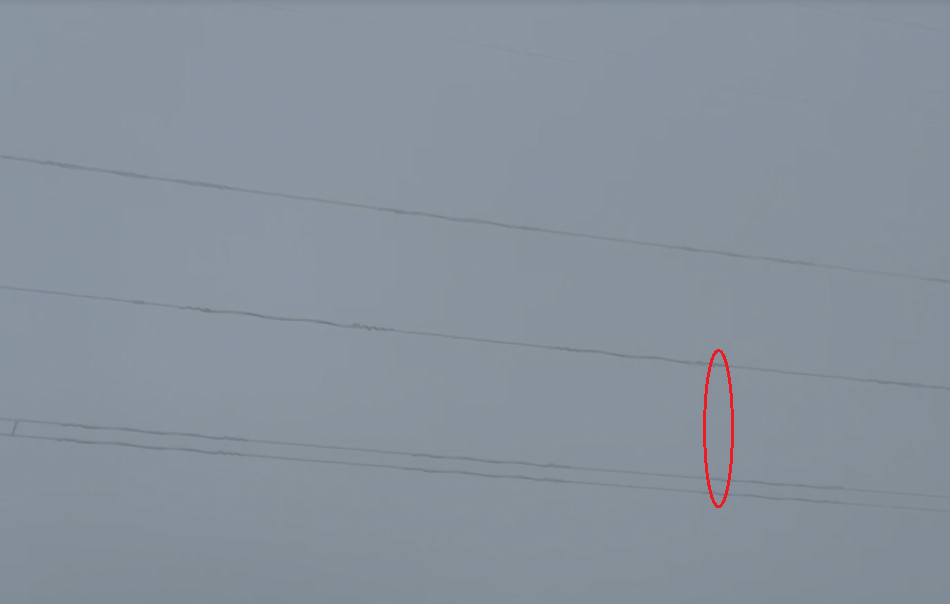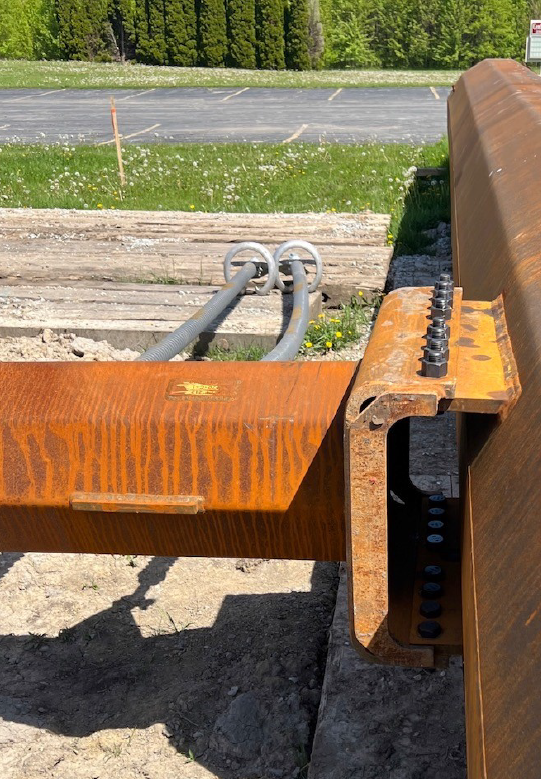PYRAMAX TYPE TUBULAR STRUCTURES
Some transmission lines require very long span crossings over rivers and other obstacles. The increased height and heavy loading may make lattice towers and tubular H-frames inefficient designs for these structures.
1.Structure Concept-Configuration:
A tubular frame may look like a lattice tower or pipe leg tower, but the quantity of members is much less which reduces installation labor and erection time. Additionally, the four legs connected with cross braces convert external loading to large axial force and avoid large bending moment at the base.
2.Design and Analysis:
-The design of tubular 3D frames performed by Valmont follows the ASCE 48 Standard ‘Design of Steel Transmission Pole Structures’.
-The grades and types of steel used for 3D frames are the same as for transmission poles.
-The extreme wind load cases should include wind in several directions – transverse, longitudinal and diagonal.
-An in-house Valmont's program for tubular structures has been enhanced to process the increased complexity of tall 3D frames. The goals of design optimization are to minimize bending moments at base of the legs and to minimize total structure cost.
-The tubular 3D frames are much more rigid than single poles in both transverse and longitudinal directions. Deflections in tubular 3D frames as a percentage of structure height are much smaller. Even under the maximum design load, deflection at top of these frames is typically between 2% and 3% of the structure height.
ANSYS Validation:
ANSYS is like an MRI, which scans and produces more detail and depth into the target areas to make sure nothing is overlooked. ANSYS provides a rich graphics capability that can be used to display analysis results on a very high-resolution graphics workstation.
3.Use:
-For very long span crossings over rivers and other obstacles.
-In the United States, tubular 3D transmission frames have been used in limited applications in the past. In many high voltage substations, deadend A-frames are installed but they are not tall. In China, pipe leg lattice towers are used in 1000-kV ultra-high voltage transmission lines replacing angle legs with round tubular members to increase loading capacity. In the US and Japan, pipe leg lattice towers are also used for some telecommunication structures.
4.Tests:
- A full-scale loading test was performed. Six load cases were selected by the customer and Valmont engineers for the test: one extreme wind, one deflection limit and four broken wire cases.
-The broken wire condition is at one shield wire plus one conductor point or at two conductor points. The transverse and vertical loads were applied at two shield wire points and six conductor points. Longitudinal loads were applied at the shield wire and conductor points where broken wire conditions occur. The wind load on the frame itself was converted into concentrated transverse forces at the top and bottom of the right columns.
5.Results:
-The 3D test frame passed 100% loading in all six load cases without failure or permanent deformation in any member or connection. After loading was removed, the structure came back to about 1 in. from the original position. Deflections met customer specified limit and were close to calculated values. After the structure was disassembled, post-test inspection confirmed everything was in good condition.
6.Conclusions:
- The design process of tubular 3D frames have undergone comprehensive static analysis, ANSYS FEA validation and full scale loading test.
- Tubular 3D frames have been successfully installed and put in operation for US and international customers. àValmont did not mention what Clients or places installed.
********************* *|* *********************



















































